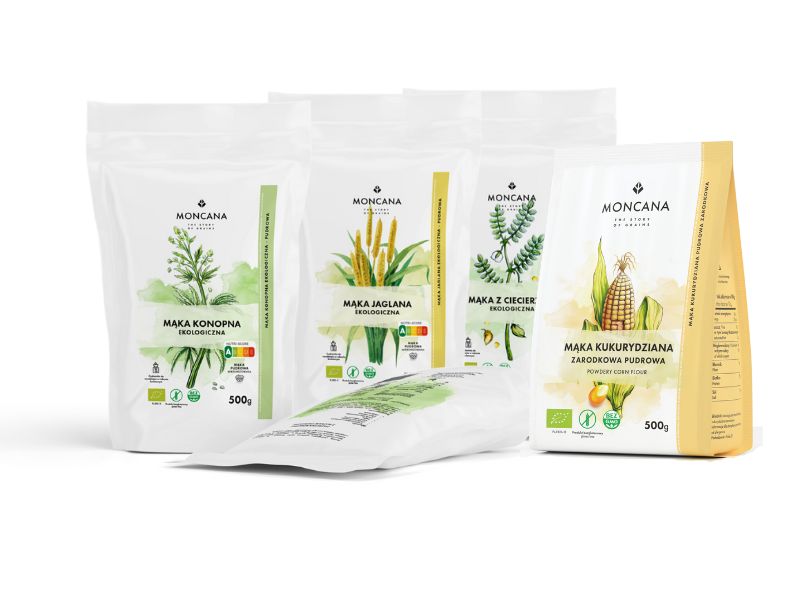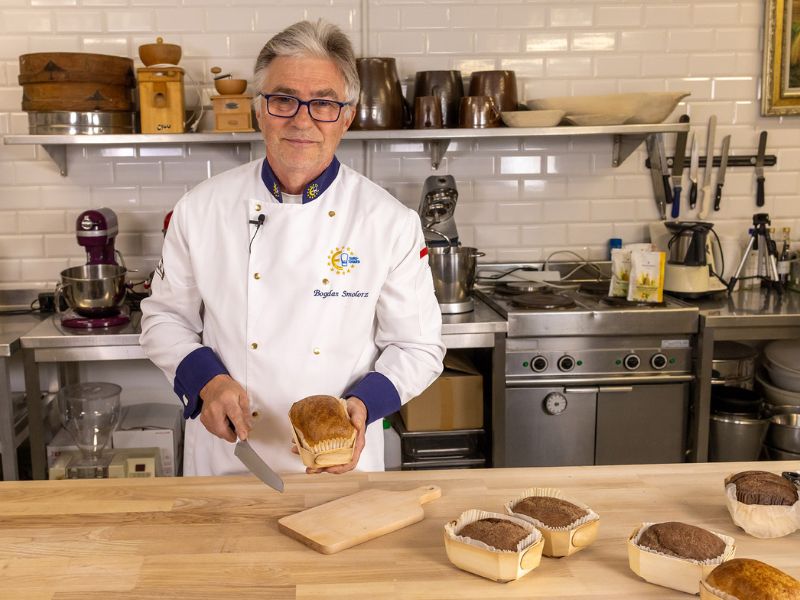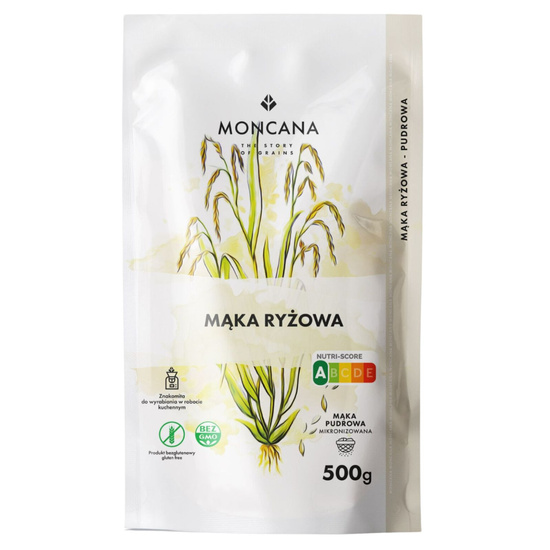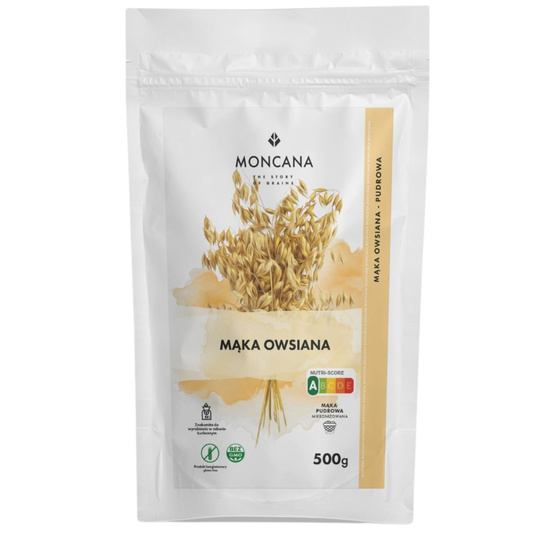Gluten-free flours and their uses. What you need to know before you start baking
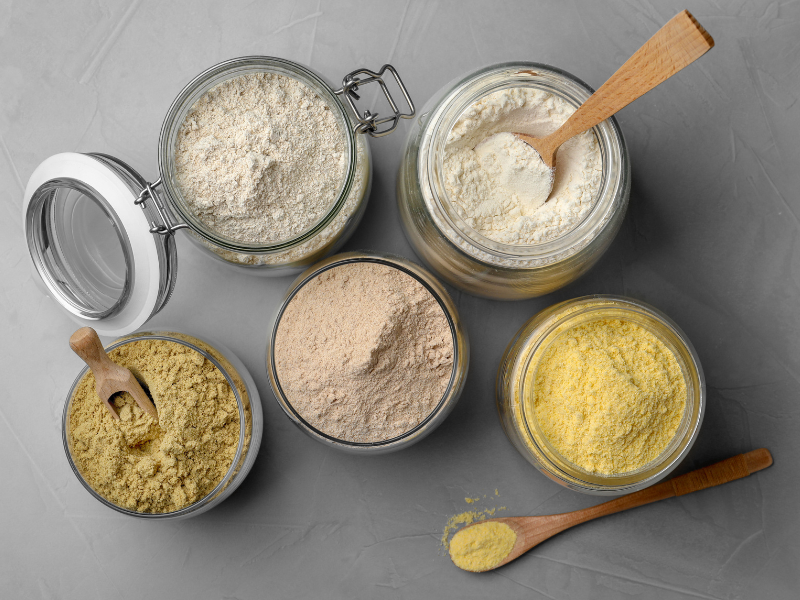
The world of gluten-free flours can seem a bit confusing, because each of them has its own unique properties - they differ in taste, texture, nutritional value, but most importantly in their behavior during baking and cooking. There is no one-size-fits-all gluten-free flour and each gluten-free flour blend will vary in composition and properties. Sometimes choosing the right flours and combinations for a recipe can be overwhelming. In this article, we will try to introduce you to some of the properties and tips of gluten-free flours.
I have celiac disease or intolerance to gluten - things get complicated
Before being diagnosed with celiac disease, baking was much simpler because it was based on wheat flour, which provided structure, lightness and elasticity to the dough due to its gluten content. Gluten is the primary ingredient in most recipes. After diagnosis, need to avoid gluten introduces many new culinary challenges. Our powdered flours come to the rescue. Because we know that in celiac disease, avoiding gluten is absolutely crucial, because even the smallest amount of this protein can trigger a serious immune response, leading to damage to the intestinal villi and a range of negative health effects, wall of our flours are 100% gluten-free and safe for people with celiac disease. You don't have to worry about cross-contamination during cultivation or grinding. We know our suppliers, we screen additional fractions that may contain gluten and we do testing on each batch. We do not process any raw materials containing gluten in our facilities.
Why you should make your own gluten-free flour mixes?
The most important reason to make your own gluten-free flour mixes is that it gives you versatility and control over the quality, texture and taste of your baked goods. Importantly, also over the nutritional quality of your diet. Many flours are fantastic sources of protein, healthy fats, fiber, vitamins and minerals (m.in. hemp flour i linen, quinoa flour, millet flour, buckwheat). Our flours, thanks to micronization, i.e. very finely ground, they also have higher bioavailability, which means better absorption of nutrients by the body. We also have on offer ready mixes for rolls, breads or doughs.
How to make your own gluten-free flour mixes?
There are several basic/basic ingredients (flours and starches), and they are tapioca flour, corn starch, sorghum flour, white buckwheat flour, potato starch, rice flour, millet flour and oat flour. It is to their mixture that we add the remaining flours. What to consider when creating a mix?
- Protein: make sure the mix contains protein-rich flours that will add structure and support (e.g. chickpea flour, almond, quinoa flour, sorghum, hemp flour)
- Color and Taste: select flours to match the color and flavor of the baked goods. Buckwheat flour i corn will give a yellow color, coconut flour - white, and buckwheat or hemp darken the baked product and add intense flavor.
- Scrooge: cornstarch, tapioca or potato give lightness and binding.
- Texture: choose flours that together will give the desired texture. All MONCANA flours due to their powdery nature, they are velvety and blend easily with other ingredients.
- Thickeners: linseed or egg plant improve flexibility and structure. We also recommend trying the additive potato flakes for baking bread, they will keep it fresher and moister longer.
- Proportions: the most common ratio is 40:60 (40% whole wheat flour and 60% white starches). When creating gluten-free baked goods, we can also stick to the scheme: 1 part base flour, ¼ part glutinous flour and ¼ part fatty flour. Read the article on mixtures. >>
Use of gluten-free flours
Gluten-free flours are extremely versatile in the kitchen. Suitable for baking bread, cakes, cookies, pancakes and pies. Using gluten-free flours introduces new flavors and textures to daily menus. With a wide selection of flours and their nutritional properties, you can create healthy and tasty baked goods and dishes.
- Blends of gluten-free flours for baking cakes and cookies
Gluten-free flour blend is a carefully selected combination of several gluten-free flours that work together to make baked goods successful. One would hope that all you have to do is go to the supermarket and grab a ready-made mix of "gluten-free flour" off the shelf, right? Unfortunately, it doesn't always work that way. Commercially available mixtures often produce different results and the effects will not always be satisfactory. In addition, manufacturers of popular mixes add artificial or unnecessary additives, such as hydroxypropyl methyl cellulose (E 464), xanthan gum, invert sugar, dextrose whether much too much starch! Of course, some mixes are better than others, both in terms of nutrient content and reliability. But the worst commercially available gluten-free flour blends (which, by the way, are usually the cheapest and sold in large supermarkets) consist mainly of rice flour. And too much rice flour tends to create a dry, crumbly, grainy texture with minimal nutritional value. Check out our all-purpose cake mix - you will bake with it a fruit pie, a flavorful babka, or the bottom for a cheesecake or tart.
- Flours for gluten-free bread and rolls
Gluten-free flours make it possible to bake crunchy bread that tastes just as good as traditional ones. Corn flour gives the products a sweet taste and golden color, chickpea flour provides protein and gives a slightly nutty flavor. Thanks to rice and millet flour, the bread will have a light and tender texture. Whole grain buckwheat flour gives baked goods a distinctive dry taste and dark color. We write about the properties of all of them later in the article. In our offer you will find dedicated mixes for baking gluten-free bread and rolls. No unnecessary additives, fillers or artificial enhancers. This ensures that baked from mixtures breads will be healthy and that they will have the right consistency and springiness.
- Gluten-free pancakes and cakes
One of the most commonly used gluten-free flours for pancakes is rice flour, prized for its lightness and delicacy. It makes the batter for pancakes smooth and easy to fry. An interesting alternative is also white buckwheat flour, which gives pancakes a distinctive, slightly nutty flavor, matching the dry filling. Check out our gluten-free pancake recipes. On our blog you will find as many as three of them >> Also check the mix on japanese Fluffy Pancakes
- Gluten-free pastas
Among gluten-free pastas, those made from corn flour reign supreme, which, with its slightly sweet flavor and golden color, is an excellent alternative to traditional pasta. Equally popular as a base for gluten-free pasta is rice flour - its softness and lightness make the finished pasta retain a softness and elasticity similar to wheat pasta.
Gluten-free starches
Tapioca starch is a fine white flour made from dried starch extracted from cassava root. Tapioca starch flour is extremely versatile, although it has low nutritional value. It is much lighter than potato flour, but has excellent absorption and binding properties, making it particularly useful in gluten-free flour mixtures for cakes and cookies. It also adds a bit of "elasticity" to baked goods, such as breads NOTE: used in too large a quantity, it can make baked goods rubbery! Tapioca has a slightly sweet taste and blends easily with other flours. On its own, it works well as a thickener for sauces and soups or as a coating. Tapioca flour works best in combination with other whole grain or protein-rich flours (both in terms of nutritional value and texture)
Cornstarch is made from finely powdered starch from corn kernels. It is a light and versatile gluten-free starch and an essential ingredient to brighten up most cakes, cookies and baked goods. Because it doesn't absorb liquids to the same extent as potato and tapioca starches, it helps you get crispy baked goods. However, it tends to be dry, so it needs to be balanced with other flours that retain moisture better. Cornstarch is virtually tasteless and has excellent thickening properties, making it ideal for soups, puddings and sauces.
Potato flour extracted from potato tubers is valued for its taste-neutrality, which allows it to be used in a variety of dishes without altering their flavor. Has excellent binding properties, helps improve the texture and moisture content of baked goods. Often added to bread, cakes and cookies to make them soft and tender.
Polenta with a slightly sweet taste, is made from ground corn. It is traditionally eaten as an accompaniment to fish and meat just like mashed potatoes. In its finely milled form (and especially when combined with other flours), it adds a slightly dense, nutty flavor to baked goods. Our polenta is finely ground so you avoid a very grainy texture in your baked goods.
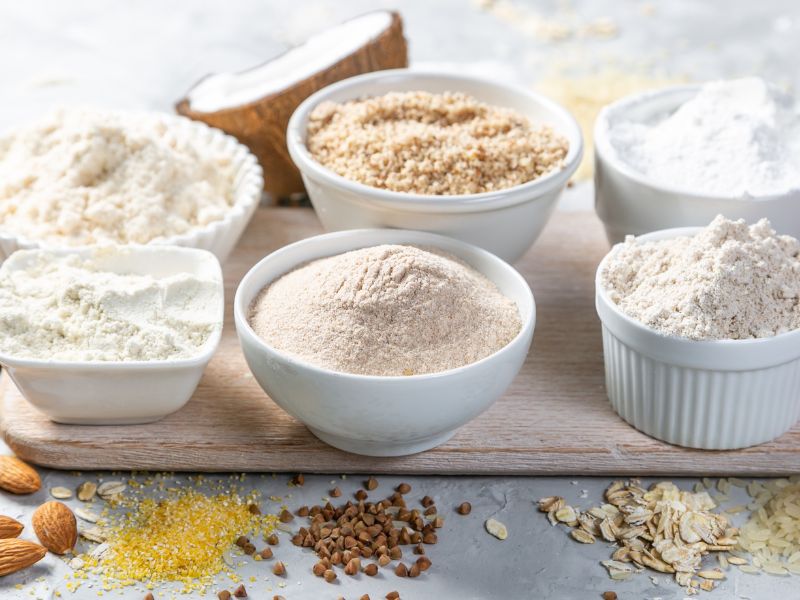
Cereal and protein flours
Whole grain buckwheat flour, is a flour with high nutritional value, rich in protein and fiber. It has a low glycemic index and is full of antioxidants, minerals and vitamin B. It has an intense nutty but somewhat earthy flavor that can dominate baked goods. Therefore, it is better to mix it with more neutral flours. Nevertheless, buckwheat flour is a versatile gluten-free flour that adds color and nutritional value to breads and cakes, which it makes a bit dry-it goes great with additives such as nuts or dried fruit. It is often found in recipes for gluten-free pancakes, cakes and some pastas. Its milder-tasting counterpart is white buckwheat flour, which has a lighter, creamy color and is not as heavy - ideal for light baked goods. Contains less fiber.
Rice flour is often used as a basic base flour in gluten-free products. Extracted from finely ground rice, it is quite versatile and easy to digest (note: because the body breaks down starch quickly, it can cause blood sugar spikes!). Rice flour works best when combined with other gluten-free flours to balance its nutritional value and baking properties. Can give a dry and slightly grainy texture to baked goods. In the case of rice flour it is very important that it comes from certain certified sources because ordinary rice flour may contain arsenic, which is harmful to health.
Quinoa flour is ground from quinoa grain and is a rare plant source of complete protein. It is rich in lysine and other amino acids and contains large amounts of vitamins B and E, calcium, iron and phosphorus. Thanks to its low glycemic index, it helps keep blood sugar levels stable. Quinoa flour has a mild, nutty flavor that blends well with other gluten-free flours in all baked goods, but especially improves the texture and flavor of breads, pastries and salty baked goods. High protein content supports the texture and structure of prepared foods.
Oat flour is a fantastically versatile cereal that is an excellent addition to any gluten-free flour blend, but especially to breads and baguettes, as it produces a slightly 'glutinous', soft dough texture when mixed thoroughly (as does the addition of egg plant husk). Also check out our recipes for waffles and oatmeal pancakes. Oat flour has a low glycemic index, is rich in protein, fiber, vitamin E, B vitamins and calcium. Ah! I oats contain beta-glucan, which helps lower cholesterol levels, improves heart health and strengthens the immune system. It also has a prebiotic effect, promoting the growth of beneficial intestinal bacteria.
Flaxseed flour is an excellent addition to gluten-free flour blends for breads, cakes and other baked goods. It has amazing binding properties and can be used in vegan recipes as an egg substitute. Flaxseed flour is low in carbohydrates and high in fiber, is full of antioxidants and helps lower cholesterol in the body.
Buckwheat flour is characterized by its yellow color (similar to corn flour) and neutral taste, MONCANA millet flour is a powdery, velvety flour that lacks the fine texture of regular flours. It shows good bonding properties, although it often requires the addition of starch to get the right consistency. Rich in protein, B vitamins and minerals such as magnesium, iron and phosphorus, it has alkaline-forming properties. It is also a good source of fiber, aids digestion. Barley flour is ideal for kneaded and sponge cakes, pancakes, dumplings, and pâtés. Baked goods made from millet flour are crumbly, which makes it it is also perfect for tarts. In gluten-free cooking, millet flour is prized for its ability to create light and fluffy baked goods while providing important nutrients.
Hemp flour is high in protein, rich in fiber gluten-free flour, full of vitamins and minerals (especially calcium, magnesium, potassium, zinc, B vitamins and vitamins A, D and E). Hemp flour has a dark color and a deep nutty flavor, somewhat grassy which makes it perfect for gluten-free flour mixes for bread, crackers and pasta. However, it is worth remembering that it is a heavy flour, so it it is best to combine it with lighter gluten-free flours, to get the perfect cake texture. Like flax flour, it should be stored in the refrigerator after opening, this will extend its shelf life. Tu find a recipe for delicious buttery hemp buns.
Chickpea flour, otherwise known as gram or basan flour, has a high protein content, it is also rich in carbohydrates and fiber. Provides significant amounts of calcium, magnesium, folic acid, vitamin B6 and potassium to the diet. Chickpea flour has a delicate, slightly nutty flavor that goes well with many dishes. Its binding capacity and light texture make it an ideal ingredient for cakes, pancakes and flat breads (naan). Adding chickpea flour to gluten-free mixes will improve their texture, taste and nutritional value. It can be combined with flours such as rice, buckwheat or oat for optimal texture and taste. Check out the recipe for pakora waffles.

The best substitute for gluten in cakes - which one?
Using something that binds and will be a substitute for gluten is essential for most gluten-free baked goods because it provides the flexibility and texture that is lost when gluten is removed. Without them, baked goods (especially breads and cakes) can become dry and crumbly.
Ground egg plant husk (psyllium) is a great source of soluble fiber, also provides calcium. Eggplant husk (in ground form) is a popular substitute for gluten due to its magical binding properties, used especially in bread baking or for dumpling dough. The plantain husk holds moisture well, and as an ingredient in a gluten-free flour blend, it increases the durability and elasticity of the dough, as well as improving the texture. Eggplant husk mimics gluten and works especially well in recipes for yeast doughs, all kinds of breads and pastas.
Chia seeds are rich in Omega-3 fatty acids, protein, sodium, fiber and many other vitamins and minerals, considered a "superfood" for their nutritional value. They have a nutty flavor and bind perfectly, and can be used as an egg substitute just like flax flour or ground flax seeds, but tend to give a heavier result. To make chia seeds an egg substitute in a vegan recipe, mix 8g of ground chia seeds with 45ml of water and let sit for 5 minutes.
Flaxseed that is, flax seeds are another great binding ingredient in gluten-free cooking. At the same time, it is an excellent source of Omega-3 fatty acids and fiber. Added to bread and rolls, ground flax seeds add elasticity and texture. They can also be used as an egg substitute in vegan baked goods. One "egg" = 8g of ground flax seeds mixed with 30ml of water and set aside for 10 min to "binding". Flax as a substitute for eggs in vegan baked goods keeps dough more lightweight.
Gelatin and its vegan counterpart agar-agar used with care, they increase flexibility and bind, especially in bread.

What to do to make gluten-free baked goods moist and keep them fresher longer?
Potato flakes although they do not act as a substitute for gluten in the sense of giving elasticity, they are an excellent addition to flour mixtures, especially in baked goods. Thanks to its ability to retain moisture, potato flakes help improve the texture and moisture content of baked goods, which is crucial in gluten-free breads, cakes and cookies. Help keep baked goods fresh, preventing them from drying out. Potato flakes are obtained from dehydrated and powdered potatoes - an extremely versatile ingredient in gluten-free cooking.
Popular nut flours
Almond flour or ground almonds are not among the cheapest, but they are definitely worth having in your gluten-free pantry, as they can quickly become a staple ingredient in gluten-free baking, especially for cakes, muffins, cookies and baked goods. Ground from raw almonds, they have a higher oil content than cereal flours, so they help make cakes rich and moist. In the gluten-free flour blend, ground almonds add texture and moisture to cakes and breads, and help provide crunch in cakes and cookies. They can also be used as a stand-alone flour for some cakes and cookies, in which case they give them a dense, moist and nutty texture. Almonds are high in protein, low in carbohydrates and contain excellent amounts of healthy monounsaturated fats and vitamin E.
Coconut flour made from dried, ground coconut pulp is low in calories and sugar, but rich in protein and fiber. It can be hard to digest, but has a low glycemic index, which helps stabilize blood sugar levels. From a baking perspective, coconut flour is extremely dry and absorbent, making it probably the most difficult flour to work with. Requires very large amounts of liquid during baking (and uses extra eggs for binding), without which the results are very dense and crumbly. NOTE: coconut flour imparts a distinct coconut flavor, but when combined with other flours in a ratio of about 20% or less of the total mixture, it blends quite well and adds nutritional value.
Tips for using gluten-free flours:
- Mixing flours: for best results, several flours are often combined. For example, rice flour, potato flour and tapioca flour can make a good base.
- Protein additive: adding protein-rich flours, such as quinoa, buckwheat or chickpea flour, can improve texture and nutritional value.
- Use of thickeners: most gluten-free baked goods require the addition of thickening agents, such as egg plant husk or flaxseed, to improve elasticity and prevent crumbling.
- Experimentation: creating your own flour blends allows you to customize baked goods to suit your needs and taste preferences. It is worth trying different proportions and types of flours to find the perfect combination.
